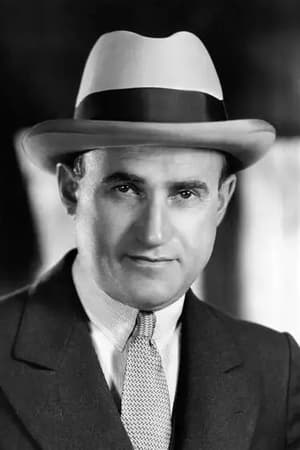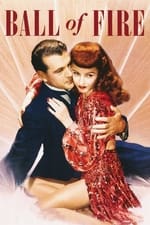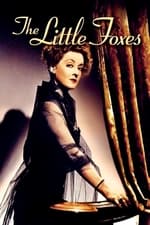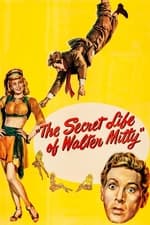Personal Info
Known For Production
Known Credits 144
Gender Male
Birthday August 17, 1879
Day of Death January 31, 1974 (94 years old)
Place of Birth Warsaw, Poland
Also Known As
- Sam Goldwyn
Content Score
100
Yes! Looking good!
Login to report an issue
Biography
Samuel Goldwyn (born Szmul Gelbfisz), also known as Samuel Goldfish, was a Polish American film producer. He was most well known for being the founding contributor and executive of several motion picture studios in Hollywood. In 1916, Goldwyn partnered with Broadway producers Edgar and Archibald Selwyn, using a combination of both names to call their movie-making enterprise Goldwyn Pictures. Seeing an opportunity, Samuel Gelbfisz then had his name legally changed to Samuel Goldwyn, which he used for the rest of his life. Goldwyn Pictures proved successful but it is their Leo the Lion trademark for which the organization is most famous. On April 10, 1924, Goldwyn Pictures was acquired by Marcus Loew and merged into his Metro Pictures Corporation. Despite the inclusion of his name, Goldwyn had no role in the management or production at Metro-Goldwyn-Mayer. Before the sale and merger of Goldwyn Pictures in April 1924, Goldwyn had established Samuel Goldwyn Productions in 1923 as a production-only operation (with no distribution arm). Their first feature was Potash and Perlmutter, released in September 1923 through First National Pictures. Some of the early productions bear the name Howard Productions, named for Goldwyn's wife Frances Howard. For 35 years, Goldwyn built a reputation in filmmaking and developed an eye for finding the talent for making films. William Wyler directed many of his most celebrated productions, and he hired writers such as Ben Hecht, Sidney Howard, Dorothy Parker, and Lillian Hellman. (According to legend, at a heated story conference Goldwyn scolded someone —in most accounts Mrs. Parker, who recalled he had once been a glove maker— with the retort: “Don't you point that finger at me. I knew it when it had a thimble on it!” During that time, Goldwyn made numerous films and reigned as the most successful independent producer in the US. Many of his films were forgettable; his collaboration with John Ford, however, resulted in Best Picture Oscar nomination for Arrowsmith (1931). William Wyler was responsible for most of Goldwyn's highly lauded films, with Best Picture Oscar nominations for Dodsworth (1936), Dead End (1937), Wuthering Heights (1939), The Little Foxes (1941) and The Best Years of Our Lives (1948). The leading actors in several of Goldwyn films, especially those directed by William Wyler, were also Oscar-nominated for their performances. Throughout the 1930s, Goldwyn released all his films through United Artists, but beginning in 1941, and continuing almost through the end of his career, Goldwyn released his films through RKO Radio Pictures. Goldwyn died at his home in Los Angeles in 1974 from natural causes, at the probable age of 94. He was interred in the Forest Lawn Memorial Park Cemetery in Glendale, California. In the 1980s, Samuel Goldwyn Studio was sold to Warner Bros. There is a theater named after him in Beverly Hills and he has a star on the Hollywood Walk of Fame at 1631 Vine Street.
Samuel Goldwyn (born Szmul Gelbfisz), also known as Samuel Goldfish, was a Polish American film producer. He was most well known for being the founding contributor and executive of several motion picture studios in Hollywood. In 1916, Goldwyn partnered with Broadway producers Edgar and Archibald Selwyn, using a combination of both names to call their movie-making enterprise Goldwyn Pictures. Seeing an opportunity, Samuel Gelbfisz then had his name legally changed to Samuel Goldwyn, which he used for the rest of his life. Goldwyn Pictures proved successful but it is their Leo the Lion trademark for which the organization is most famous. On April 10, 1924, Goldwyn Pictures was acquired by Marcus Loew and merged into his Metro Pictures Corporation. Despite the inclusion of his name, Goldwyn had no role in the management or production at Metro-Goldwyn-Mayer. Before the sale and merger of Goldwyn Pictures in April 1924, Goldwyn had established Samuel Goldwyn Productions in 1923 as a production-only operation (with no distribution arm). Their first feature was Potash and Perlmutter, released in September 1923 through First National Pictures. Some of the early productions bear the name Howard Productions, named for Goldwyn's wife Frances Howard. For 35 years, Goldwyn built a reputation in filmmaking and developed an eye for finding the talent for making films. William Wyler directed many of his most celebrated productions, and he hired writers such as Ben Hecht, Sidney Howard, Dorothy Parker, and Lillian Hellman. (According to legend, at a heated story conference Goldwyn scolded someone —in most accounts Mrs. Parker, who recalled he had once been a glove maker— with the retort: “Don't you point that finger at me. I knew it when it had a thimble on it!” During that time, Goldwyn made numerous films and reigned as the most successful independent producer in the US. Many of his films were forgettable; his collaboration with John Ford, however, resulted in Best Picture Oscar nomination for Arrowsmith (1931). William Wyler was responsible for most of Goldwyn's highly lauded films, with Best Picture Oscar nominations for Dodsworth (1936), Dead End (1937), Wuthering Heights (1939), The Little Foxes (1941) and The Best Years of Our Lives (1948). The leading actors in several of Goldwyn films, especially those directed by William Wyler, were also Oscar-nominated for their performances. Throughout the 1930s, Goldwyn released all his films through United Artists, but beginning in 1941, and continuing almost through the end of his career, Goldwyn released his films through RKO Radio Pictures. Goldwyn died at his home in Los Angeles in 1974 from natural causes, at the probable age of 94. He was interred in the Forest Lawn Memorial Park Cemetery in Glendale, California. In the 1980s, Samuel Goldwyn Studio was sold to Warner Bros. There is a theater named after him in Beverly Hills and he has a star on the Hollywood Walk of Fame at 1631 Vine Street.
Production
|
|||||||||||||||||||||||||||||||||||||||
|
|||||||||||||||||||||||||||||||||||||||
|
|||||||||||||||||||||||||||||||||||||||
|
|||||||||||||||||||||||||||||||||||||||
|
|||||||||||||||||||||||||||||||||||||||
|
|||||||||||||||||||||||||||||||||||||||
|
|||||||||||||||||||||||||||||||||||||||
|
|||||||||||||||||||||||||||||||||||||||
|
|||||||||||||||||||||||||||||||||||||||
|
|||||||||||||||||||||||||||||||||||||||
|
|||||||||||||||||||||||||||||||||||||||
|
|||||||||||||||||||||||||||||||||||||||
|
|||||||||||||||||||||||||||||||||||||||
|
|||||||||||||||||||||||||||||||||||||||
|
|||||||||||||||||||||||||||||||||||||||
|
|||||||||||||||||||||||||||||||||||||||
|
|||||||||||||||||||||||||||||||||||||||
|
|||||||||||||||||||||||||||||||||||||||
|
|||||||||||||||||||||||||||||||||||||||
|
|||||||||||||||||||||||||||||||||||||||
|
|||||||||||||||||||||||||||||||||||||||
|
|||||||||||||||||||||||||||||||||||||||
|
|||||||||||||||||||||||||||||||||||||||
|
|||||||||||||||||||||||||||||||||||||||
|
|||||||||||||||||||||||||||||||||||||||
|
|||||||||||||||||||||||||||||||||||||||
|
|||||||||||||||||||||||||||||||||||||||
|
|||||||||||||||||||||||||||||||||||||||
|
|||||||||||||||||||||||||||||||||||||||
|
|||||||||||||||||||||||||||||||||||||||
|
|||||||||||||||||||||||||||||||||||||||
|
|||||||||||||||||||||||||||||||||||||||
|
|||||||||||||||||||||||||||||||||||||||
|
|||||||||||||||||||||||||||||||||||||||
|
|||||||||||||||||||||||||||||||||||||||
|
|||||||||||||||||||||||||||||||||||||||
|
|||||||||||||||||||||||||||||||||||||||
|
Crew
|
||||||
|
||||||
|
||||||
|
||||||
|
||||||
|
||||||
|
||||||
|
||||||
|
Acting
|
|||
|
|||
|
|||
|
|||
|
|||
|








